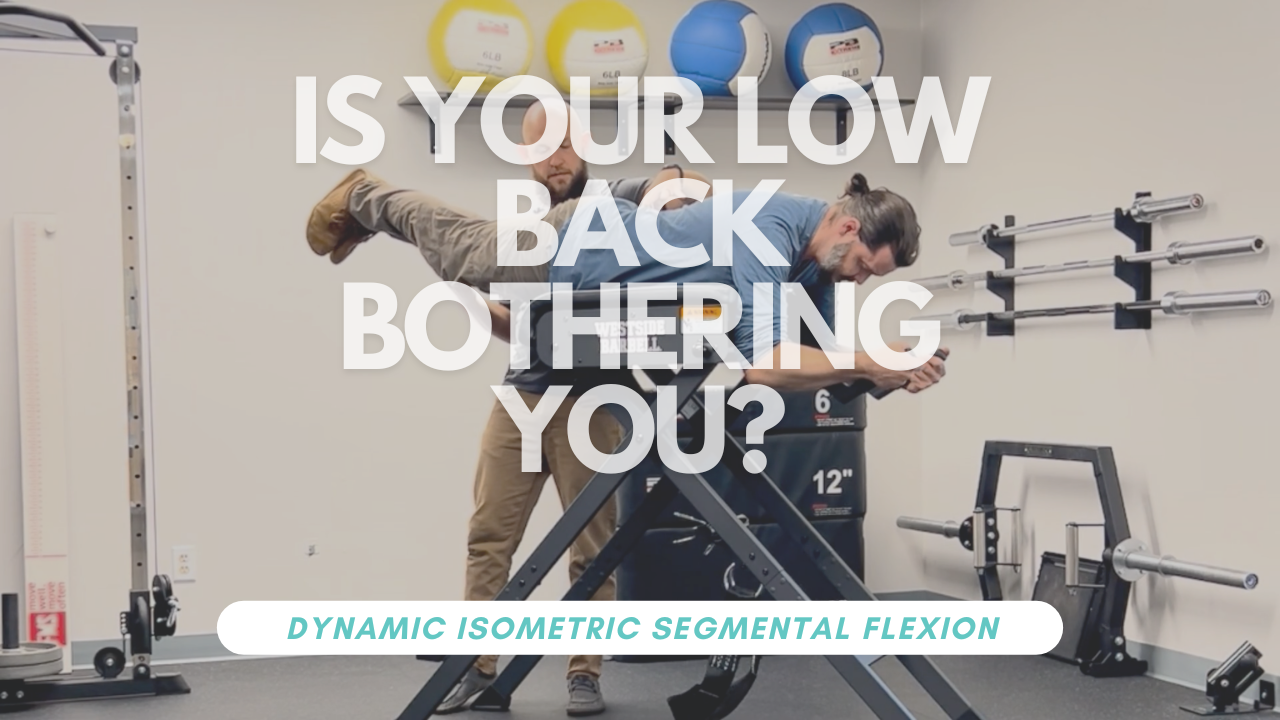
Low back pain and limited flexibility in the lumbar spine can significantly affect your daily life. At Twin Cities Movement, we focus on improving the function and health of the lumbar spine through targeted exercises. Today, we’re going to delve into a technique called dynamic isometrics, which helps add capacity to the lumbar spine in flexion and lateral flexion, ultimately enhancing both strength and endurance.
What is a Dynamic Isometric Exercise
Dynamic isometric exercises involve holding an isometric contraction while moving through a range of motion. This method targets specific segments of the spine, building strength and flexibility simultaneously. Essentially, it’s about maintaining muscle engagement while the body moves, which can be incredibly effective for spinal health.
Performing a Dynamic Isometric
Here’s how we perform a dynamic isometric for lumbar flexion, with a focus on lateral flexion:
Starting Position: Have the patient, Andy in our example, get into a flexed position. We’ll then assist in lifting his legs to bring his spine into full extension.
Isometric Hold: Andy will use his muscles to hold this extended position. The key here is to maintain height as much as possible, even as he begins to move.
Lateral Flexion Movement: While holding the extension, Andy will slowly start to bend laterally. The goal is to keep the spine extended and avoid losing height, which naturally happens as the muscles fatigue.
Controlled Descent: As Andy tires, he will gradually work his way down, maintaining the isometric contraction throughout. This slow descent ensures the muscles are worked through their full range of motion.
This process involves both strength and control, making it a dynamic isometric exercise. By moving laterally while holding an isometric position, we engage the muscles in a comprehensive way, enhancing both their strength and flexibility.
The Importance of Lumbar Extensor Endurance
Building endurance in the lumbar extensors is crucial for protecting the spine from injury and enhancing overall spinal health. Here’s how we achieve this with the reverse hyper machine:
Setting Up: Andy will start by creating momentum on the reverse hyper machine, swinging his legs back and forth to reach full extension.
Contraction and Release: At the top of the motion, Andy will hold a full contraction briefly before letting the weight swing back down. This repeated motion ensures the lumbar extensors are fully engaged and then relaxed, promoting both strength and decompression.
Benefits: This exercise not only strengthens the lumbar extensors but also teaches them to maintain spinal protection during flexion. The swinging motion provides decompression, which is beneficial for spinal health.
Why This Matters
Improving the capacity of the lumbar spine through these exercises offers several benefits:
Enhanced Strength: Building strong lumbar extensors helps support the spine and reduces the risk of injury.
Improved Flexibility: By working through the full range of motion, these exercises enhance spinal flexibility.
Better Endurance: Training the lumbar extensors to maintain contraction even when fatigued helps protect the spine during everyday activities.
Pain Reduction: Regularly performing these exercises can help alleviate chronic low back pain by improving the function and resilience of the lumbar spine.
Check out our YouTube Channel for this video and more!
Dynamic isometric exercises, combined with targeted endurance training for the lumbar extensors, can significantly improve lumbar spine health. At Twin Cities Movement, we incorporate these techniques to help our patients regain and maintain spinal flexibility and strength.
Whether you’re recovering from low back pain or looking to prevent it, these exercises are a valuable part of your fitness routine. If you’re interested in learning more or want a personalized plan, feel free to reach out to us at Twin Cities Movement.
